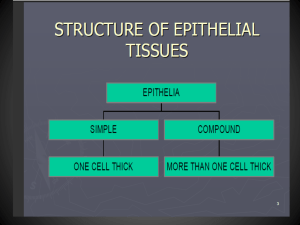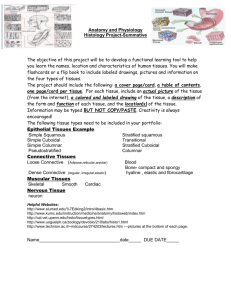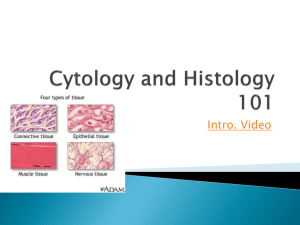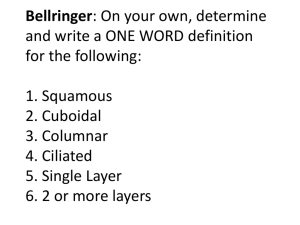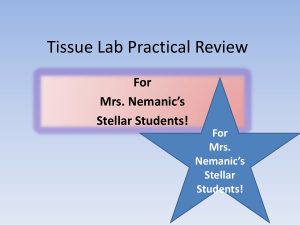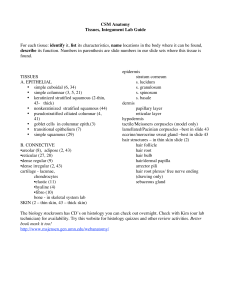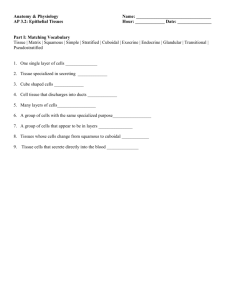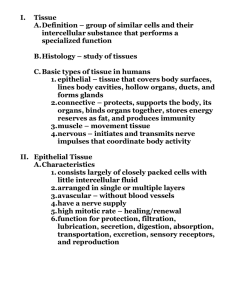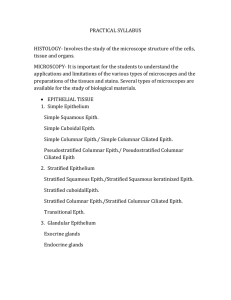Part 1
advertisement
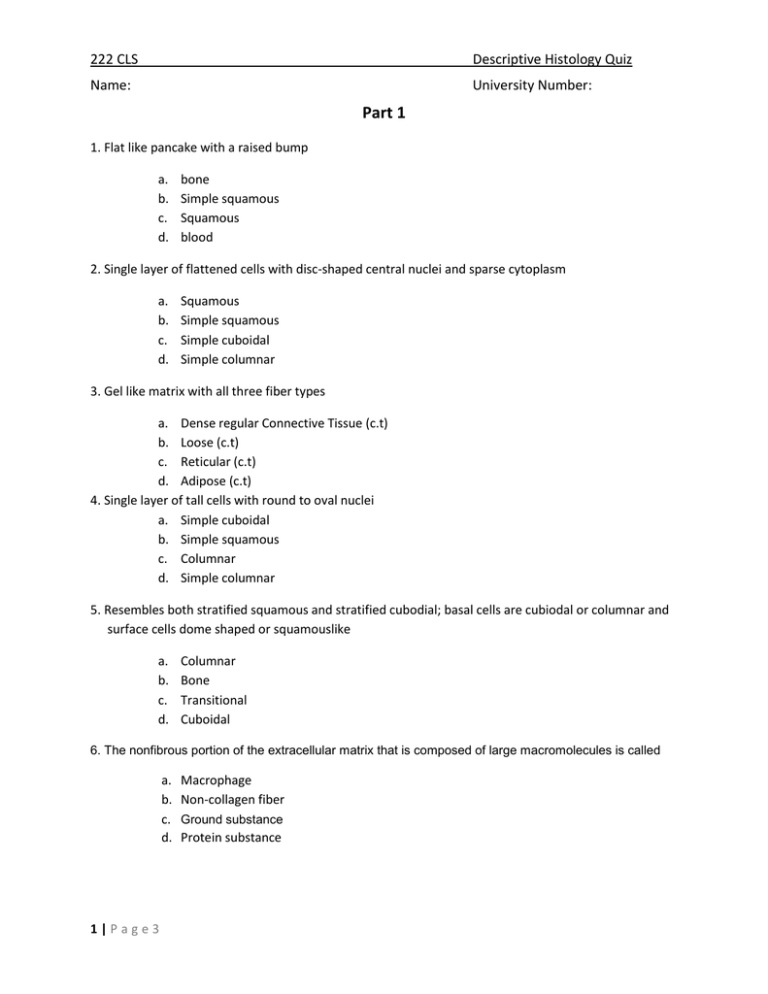
222 CLS Descriptive Histology Quiz Name: University Number: Part 1 1. Flat like pancake with a raised bump a. b. c. d. bone Simple squamous Squamous blood 2. Single layer of flattened cells with disc-shaped central nuclei and sparse cytoplasm a. b. c. d. Squamous Simple squamous Simple cuboidal Simple columnar 3. Gel like matrix with all three fiber types a. Dense regular Connective Tissue (c.t) b. Loose (c.t) c. Reticular (c.t) d. Adipose (c.t) 4. Single layer of tall cells with round to oval nuclei a. Simple cuboidal b. Simple squamous c. Columnar d. Simple columnar 5. Resembles both stratified squamous and stratified cubodial; basal cells are cubiodal or columnar and surface cells dome shaped or squamouslike a. b. c. d. Columnar Bone Transitional Cuboidal 6. The nonfibrous portion of the extracellular matrix that is composed of large macromolecules is called a. b. c. d. 1|Page3 Macrophage Non-collagen fiber Ground substance Protein substance 222 CLS Descriptive Histology Quiz Name: University Number: Part 2 True/False Questions 1. Simple cuboidal is single layer of tall cells with round to oval nuclei False True 2. Bone is hard; calcified matrix containing many collagen fibers; osteocytes in the launae and well vascularized False True 3. Pseudostratified columnar is thick membrane composed of several cell layers; basal cells are cubodial or columnar and metabolically active; suface cells are flattened False True 4. Epithial tissue is highly specialized for contraction; function is to produce movement False True 5. Plasma cell releases histamine and other substances in response to allergins, thereby contributing to an allergic response False 2|Page3 True 222 CLS Descriptive Histology Quiz Name: University Number: Part 3 Please answer 2 of the following SHORT ASSAY questions (you can use drawing, words ..etc) 1. Link 3 different type of epithelial tissue to its location and functions? 2. Describe the two major types of Glandular epithelium and its functionality? 3. Explain the different type of Fibers in Connective Tissue? 4. Explain why Connective Tissue may be either liquid (blood), semi-solid (fat), or very rigid (bone). 3|Page3
